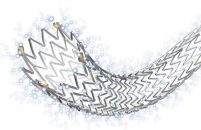In addition to aspirin, Ticagrelor offers better prognosis in patients that already had a stroke and have a high-risk cardiovascular profile. These benefits should be correctly balanced seeing as they are not free of risk. Antiplatelet therapy makes part of the standard treatment of cardiac or cerebrovascular patients. Ticagrelor has shown superior to clopidogrel in…
ESC 2021 | ACST-2: CAS vs Endarterectomy in Asymptomatic Patients
The ACST-2 was designed to compare long-term outcomes of carotid artery stenting (CAS) vs carotid endarterectomy (CEA) in patients with asymptomatic stenosis. Prior to this study we had the German registry including 18,000 patients undergoing CAS and 86,000 receiving CEA between 2014 and 2019. At 30 days, disabling stroke rate was 0.7% for both strategies.…
Differences in American and European Atrial Fibrillation Guidelines
The recent publication of the European Society of Cardiology (ESC) and the American College of Cardiology (ACC) guidelines provided an important update on multiple aspects of the management of atrial fibrillation (AF). However, these guidelines differ in terms of management and recommendation levels. As it might be expected, most differences arose in intermediate cases—both guidelines…
ACC 2021 | LAAOS III: Appendage Closure During Central Vascular Surgery
According to the LAAOS III study, presented at the American College of Cardiology (ACC) 2021 Congress and simultaneously published in the New England Journal of Medicine (NEJM), patients with atrial fibrillation who undergo central vascular surgery for any other indication find benefit in appendage closure during said surgery. Using oral anticoagulation agents, patients undergoing appendage closure…
Can We Deal with Learning Curves in Acute Stroke?
When an interventional cardiology center, where interventional cardiology specialists work alongside neurologists and radiologists, start a thrombectomy program in acute stroke, results achieved are similar to those at an interventional neurology center. Mechanical thrombectomy has proven to be the best treatment option for acute ischemic stroke. However, it is not widely available, mainly due to…
Single or Dual Antiplatelet Therapy in Stroke or Transient Ischemic Attack?
Antiplatelet therapy is key to prevent thrombotic events after a transient ischemic attack (TIA) or ischemic stroke. The role of aspirin is well established in this scenario, but there is emerging evidence for a short period of dual antiplatelet therapy (DAPT). Now, can this strategy avoid recurrent strokes without paying a price in terms of…
Cerebral Protection Devices during TAVR in the Daily Practice
The theory behind the use of cerebral protection devices during TAVR is good, but hard to test. The daily practice provides a far bigger number of patients, and therefore might be able to better show how to prevent one of the hardest events during TAVR. This study resorted to Germany’s TAVR database between 2015 and…
Five-Years After PFO Closure: Procedural Safety and Effectiveness
Five-year outcomes of the randomized REDUCE study showed a continuous benefit from patent foramen ovale (PFO) closure compared with antiplatelet agents to prevent cryptogenic strokes. The most important aspect of this result seems to be the idea that PFO closure in selected patients offers durable benefit with guaranteed long-term safety. The original results from REDUCE…
Contralateral Occluded Carotid Defines Revascularization Strategy
A significative lesion to the carotid artery in addition to contralateral carotid occlusion is an obvious factor of high risk for a revascularization procedure. However, this might be true for surgery but not for carotid artery stenting according to this recent publication in JACC. The presence of contralateral carotid occlusion has been established as high…
Dual Layered for Dual Protection in Carotid PCI
At present, there is more than one dual layered stent in the market offering additional protection in carotid PCI. Therefore we saw fit to look at these devices to compare class benefits and find any specific differences. This study assessed the safety and efficacy of two dual layered mesh covered stents especially designed for carotid…









